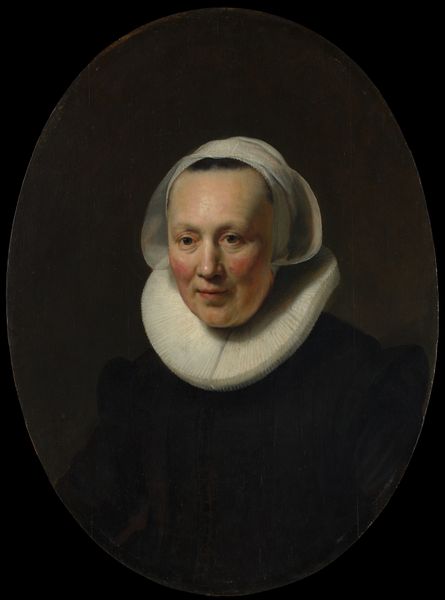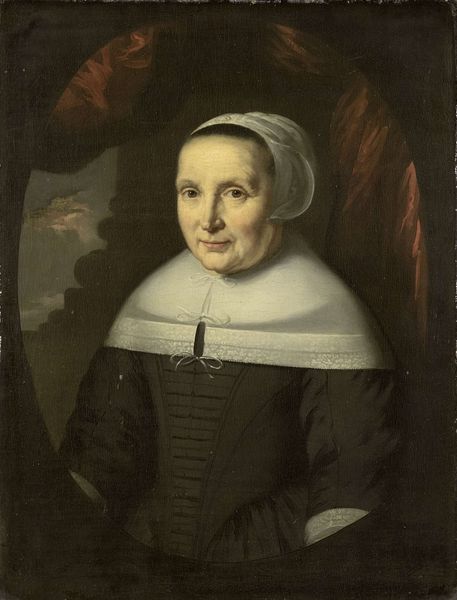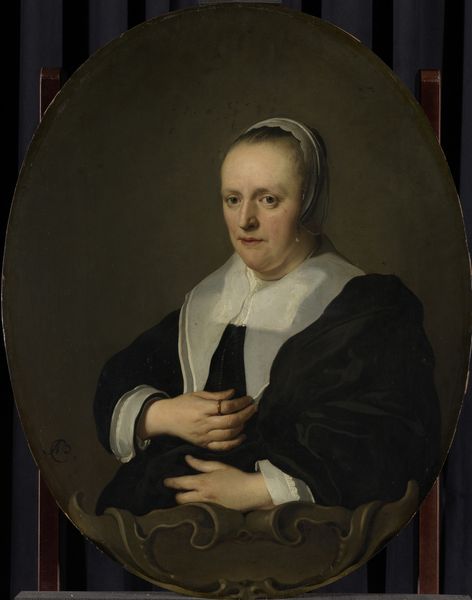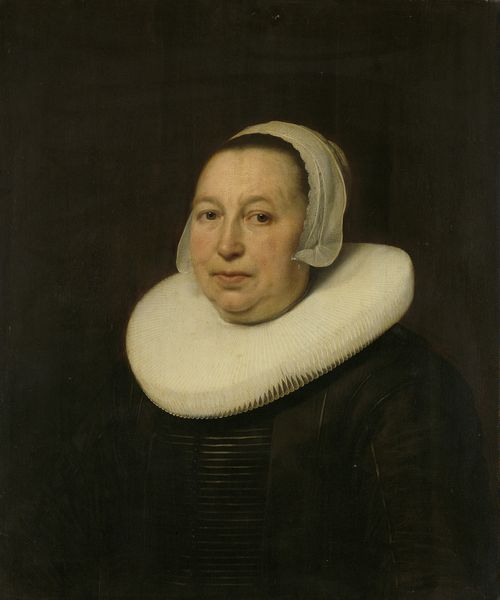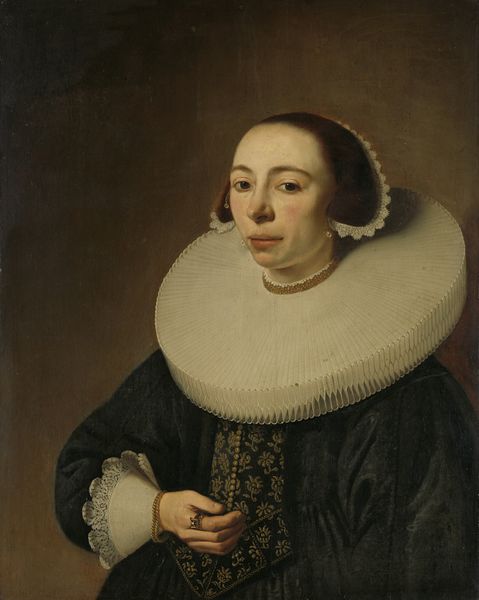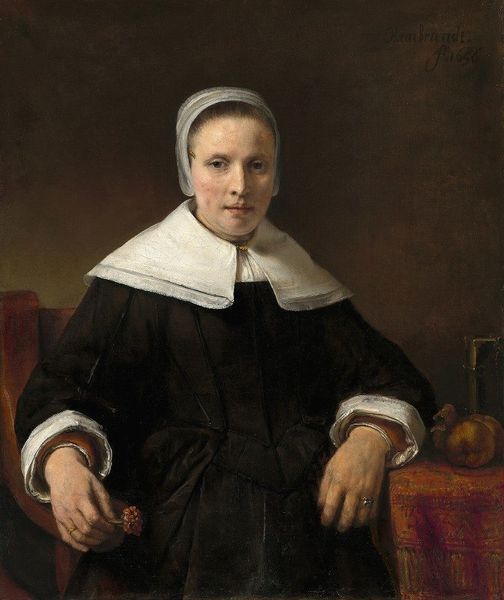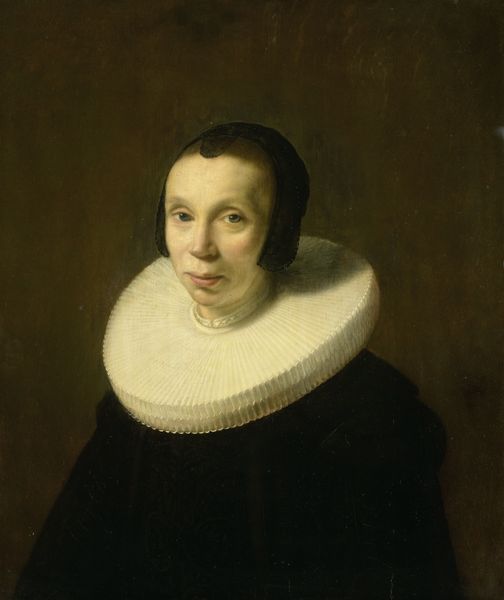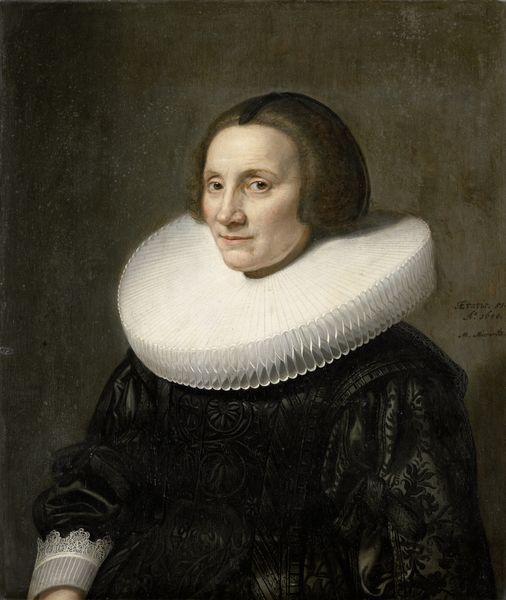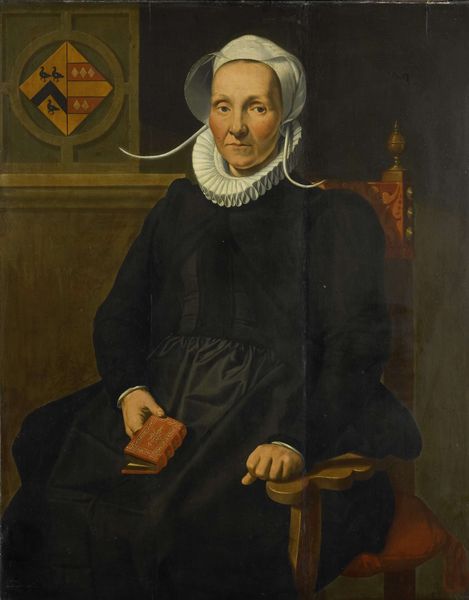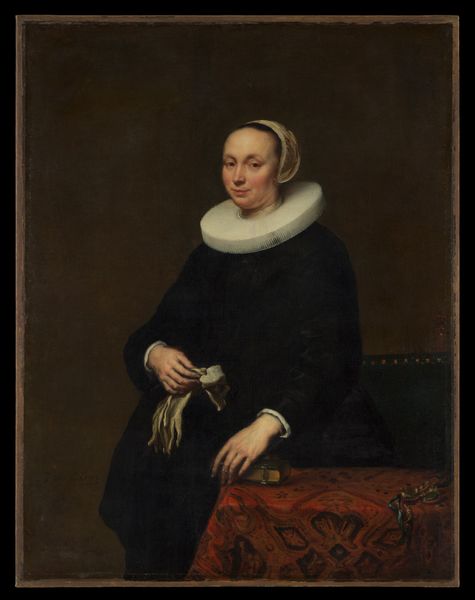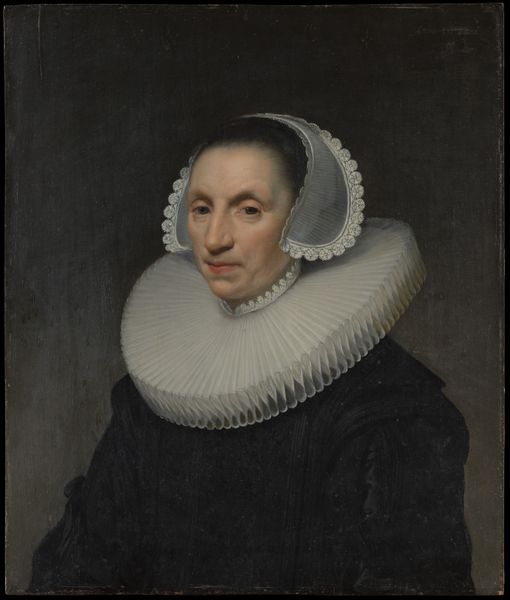
painting, oil-paint
#
portrait
#
baroque
#
dutch-golden-age
#
painting
#
oil-paint
#
realism
Dimensions: support height 83 cm, support width 68 cm, outer size depth 8 cm
Copyright: Rijks Museum: Open Domain
Curator: Anthonie Palamedesz.'s 1652 oil on panel, “Portrait of a Woman, probably Jacobmina de Grebber,” offers a glimpse into Dutch Golden Age portraiture. Editor: The darkness immediately strikes me. A somberness seems to radiate from the subject despite the precise, almost clinical detail of the face and linen. Curator: Well, let's consider what the stark, contrasting light and shadow might be pointing to within its cultural moment. Palamedesz. painted this in Haarlem; portraiture was highly commodified at the time, almost industrialized with artists running painting workshops. What does such a system say about how the sitter herself understood the representation? Editor: You speak of production, and I look at execution. Observe how the ruff encircles the subject's face, and notice the minute folds rendered with such exacting care. The fabric has a near tactile quality, but how does this materiality emphasize that form? The somber mood is reinforced by this circular form, in turn, accentuating a certain emotional reserve. Curator: That dark costume surely required dyestuffs sourced from afar, imported into the Dutch Republic. Each element of the clothing signals the material conditions of the sitter’s relative wealth, and hints at an active mercantile system that funded artists like Palamedesz. I can't ignore the connection between art, trade and society in that moment! Editor: Agreed, these details signify affluence, however consider their intrinsic pictorial values. The layering of forms – the curve of the ruff against the square cut of her dress, offset by the softer material crumpled in her hand– constructs visual meaning irrespective of mercantile implications. This complex interaction between textures is fundamental to this painting’s power. Curator: The "power," though, only arises, in part, because of this interaction between subject, artist, and global economies! Each brushstroke signifies resources brought into the Dutch Republic. We shouldn't shy away from investigating those socio-economic ties to art. Editor: We're in agreement regarding the context being an inextricable layer, though my point is we appreciate the full value, if first, we focus on its innate qualities like line, shape, and material! I think those things stand strong even if isolated from the rest. Curator: And I propose a conversation that situates this work squarely in its moment of production, and considers how the very nature of "seeing" depends on historical and social systems! Editor: Precisely that is where its significance resides!
Comments
No comments
Be the first to comment and join the conversation on the ultimate creative platform.
